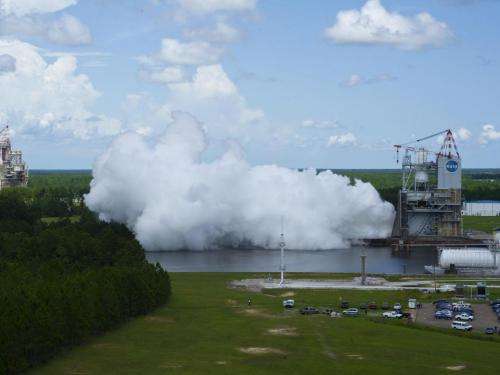J-2X nozzle extension goes the distance

(Phys.org) -- NASA engineers conducted a 550-second test of the new J-2X rocket engine at Stennis Space Center in Mississippi on July 13. The J-2X engine will power the upper-stage of a planned two-stage Space Launch System, or SLS. The SLS will launch NASA's Orion spacecraft and other payloads, and provide an entirely new capability for human exploration beyond low Earth orbit. Designed to be safe, affordable and flexible for crew and cargo missions, the SLS will continue America's journey of discovery and exploration to destinations including nearby asteroids, Lagrange points, the moon and ultimately, Mars.
The test, conducted on the A-2 Test Stand, continued a series of firings to gather critical data for engine development. This was the first flight-duration test of the engine's nozzle extension, a bell shaped device to increase engine performance.
Operators collected data about the nozzle extension's performance in conditions that simulated heights up to 50,000 feet. Additionally, operators introduced different propellant pressures at startup to test how the engine reacted. The J-2X is being developed by Pratt & Whitney Rocketdyne for NASA’s Marshall Space Flight Center in Huntsville, Ala. It is the first liquid oxygen and liquid hydrogen rocket engine rated to carry humans into space to be developed in 40 years.
Provided by NASA




















